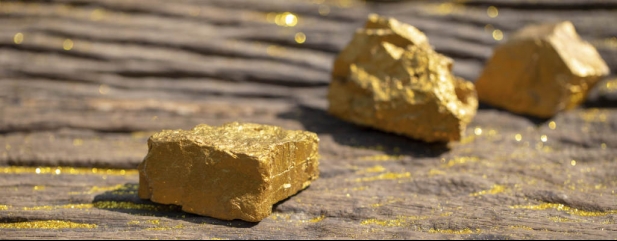Archived article
Please note that tax, investment, pension and ISA rules can change and the information and any views contained in this article may now be inaccurate.
Why gold has lost its shine

The gold market has recovered a little from the ‘flash crash’ which saw signs of a strong US recovery, a strengthening dollar and technical factors conspire to send the precious metal 4% lower on 9 August.
A better-than-expected US non-farm payrolls report (6 Aug) is seen potentially as the catalyst for the US Federal Reserve (Fed) to begin tapering its support for the economy given the Fed’s focus on the jobs market when it comes to making monetary policy decisions.
However, the longer-term slump in gold may still be shaking faith in its credentials as both a safe haven at times of market volatility and an inflation-busting asset despite its historic status as a traditional and physical store of value.
After all inflationary pressures and the threats to economic recovery from Covid variants have been the market’s twin obsessions in 2021, which you might have expected to create ideal conditions for strong gold prices.
Since hitting a record high a little over a year ago at more than $2,000 per ounce the price has in fact retreated more than 15%. In part this may have reflected a shift into cryptocurrency bitcoin as an alternative hedge against inflation – though this market has itself recently lost some of its shine.
Jefferies analyst Christopher LaFemina is negative on gold prices and by extension gold miners in the current environment. He comments: ‘We are most bullish on gold in an environment of slow growth, low real interest rates, a weak US dollar and modest inflation. A period of rising inflation due to potentially overheating economies is not a positive for gold, in our view.’
As the table shows gold miners and other gold-related investments have struggled so far this year.
What’s happening with oil?
At least some of 2021’s rebound in oil prices has been predicated on a recovery in demand in the second half of this year as the impact of the global vaccination drive bears fruit.
However, this story has been clouded somewhat by the spread of the Delta variant with the impact on the world’s top oil consumer China being closely watched and this is putting crude under renewed pressure.
China is facing its worst Covid outbreak since the start of the pandemic and recent data shows the country’s oil imports slipped to 9.7 million barrels of oil per day (bopd) in July from 9.8 million bopd in June and down from 12.1 million bopd in July 2020.
Important information:
These articles are provided by Shares magazine which is published by AJ Bell Media, a part of AJ Bell. Shares is not written by AJ Bell.
Shares is provided for your general information and use and is not a personal recommendation to invest. It is not intended to be relied upon by you in making or not making any investment decisions. The investments referred to in these articles will not be suitable for all investors. If in doubt please seek appropriate independent financial advice.
Investors acting on the information in these articles do so at their own risk and AJ Bell Media and its staff do not accept liability for losses suffered by investors as a result of their investment decisions.

 magazine
magazine








